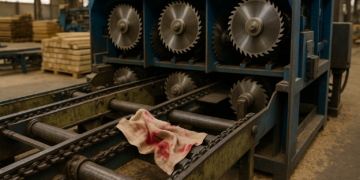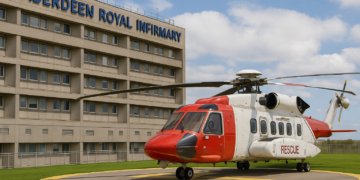Top 10 Workplace Safety Failures & How to Avoid Them
Last updated: 8 October 2025
Author: Jade Anderson, Senior Reporter — UK-Safety.News
Introduction
Across UK workplaces, the same avoidable failures appear again and again: poor risk assessments, weak supervision, and rushed shortcuts. This guide breaks down the 10 most common failures we see in incident reports and investigations — and gives you practical, simple actions to stop them before they start.
1) Missing or Outdated Risk Assessments
Failure: Generic or outdated risk assessments that don’t reflect real tasks on site.
Fix: Review risk assessments at least annually or after changes; involve frontline staff; keep them short, specific, and accessible on the job.
2) Inadequate Training & Competence
Failure: One-off inductions with no refreshers or verification of skills.
Fix: Map tasks → required training/certificates; track expiries; include practical assessments and toolbox talks.
3) Poor Housekeeping
Failure: Slips, trips, blocked walkways, and ad-hoc storage.
Fix: Daily 5-minute housekeeping checks, clear walkways, labelled storage, spill kits, and visible ownership per area.
4) Defeated or Missing Guards
Failure: Machine guards removed for “just a quick job.”
Fix: Lockout/tagout, interlocked guards, supervisor spot checks, and “no guard = no work” rule.
5) Working at Height Without Controls
Failure: Improvised access, unsecured ladders, no edge protection.
Fix: Prefer collective protection (guardrails, towers), inspect ladders, use permits and competent persons.
6) Manual Handling & Ergonomics Ignored
Failure: Back injuries from repetitive lifting or awkward postures.
Fix: Use mechanical aids, redesign tasks, rotate roles, train in handling techniques, and set weight limits.
7) Poor Contractor Control
Failure: Assuming contractors “bring their own safety.”
Fix: Pre-qualify competence, share site rules and risks, agree method statements, supervise, and sign off work areas.
8) Weak Permit-to-Work & Isolation
Failure: Hot work, confined spaces, or energised systems without formal control.
Fix: Use robust permits, gas testing, continuous monitoring, and verified isolation/LOTO.
9) PPE as the First (and Only) Control
Failure: Issuing PPE instead of fixing hazards at source.
Fix: Follow the hierarchy of control: eliminate → substitute → engineer → administrate → PPE (last line of defence).
10) Incident Reporting Without Learning
Failure: Near misses not reported; actions not closed; repeat events.
Fix: Simple reporting channels, no-blame culture, trend reviews, and close-out deadlines with accountable owners.
Quick Win Checklists
Daily Supervisor Walkaround (5 minutes)
✅ Clear walkways and exits
✅ Guards/interlocks in place
✅ Spills cleared / spill kits ready
✅ Ladders/MEWPs inspected
✅ PPE available and used
✅ Housekeeping standards met
Weekly Safety Review (30 minutes)
✅ Review incidents/near misses and close actions
✅ Check training/cert renewals due
✅ Inspect high-risk areas (height, energy, traffic)
✅ Verify contractor controls and permits
✅ Spot-check risk assessments match real work
Common Root Causes (and How to Counter Them)
| Root Cause | Typical Signal | Countermeasure |
|---|---|---|
| Time pressure | “Just this once” shortcuts | Plan buffers; reward safe behaviours, not speed alone |
| Normalisation of deviance | Unsafe “workarounds” become routine | Leadership walkarounds; reset standards; retrain |
| Poor communication | Confusing instructions; mixed signals | Toolbox talks; visual SOPs; close the loop |
| Competence gaps | New tasks done by untrained staff | Task-to-training matrix; buddy system |
















